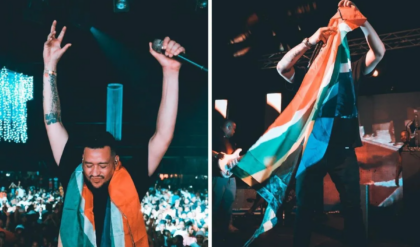
Caitlin Clark has ignited a revolution in women’s basketball, shaking up the WNBA and drawing unprecedented attention to the sport. Her debut season has brought record-breaking crowds, soaring TV ratings, and a surge of media coverage. Clark’s appeal has attracted a new wave of fans, boosting attendance by 14% in just the first week of the season and drawing millions of viewers to her games. Her standout performance, highlighted by her unanimous Rookie of the Year selection, has cemented her as a rising star in the league.
However, Clark’s rapid rise has not come without controversy. Her success has sparked discussions around race, representation, and the future of the WNBA. Some veteran players, particularly Black athletes who have long been the backbone of the league, feel overshadowed by the media’s intense focus on Clark, a white player. The racial dynamics in the WNBA have been highlighted as many ask why similarly talented Black players have not received the same level of attention or commercial opportunities. While Clark herself has tried to steer clear of these racial debates, expressing respect for all players, the issue remains a significant point of tension within the league.
As media attention on Clark grows, so do conversations about the financial state of women’s basketball. Many WNBA players are forced to play overseas during the offseason to make ends meet, as the league’s salaries are not enough to sustain them year-round. Some commentators, like Jason Whitlock, have suggested that a rival league, possibly backed by foreign investors, could emerge as a solution, offering better pay and conditions for players. With talk of such a league gaining traction, the WNBA is at a critical juncture. They must decide whether to make necessary changes to improve player pay and conditions or risk losing their top talent to a competitor.
In addition to financial concerns, the WNBA is also facing a shift in its fan base. Since Clark’s arrival, there has been an increase in white viewership, raising concerns about the league’s identity. Traditionally supported by a diverse fan base, some fear that an overemphasis on Clark could alienate the league’s core supporters. Players like Angel Reese, who have faced their own share of controversy, have been vocal critics of how the media frames Clark’s success compared to that of Black athletes. Reese has pointed out the double standards in media coverage, questioning why narratives surrounding Black athletes are often different from those about white players like Clark.
The WNBA now faces a choice: they can either embrace this moment and address the concerns of their players, building a stronger and more inclusive league, or they can let these tensions grow, risking the loss of their biggest stars and the unity within the league. Clark may have sparked a revolution in women’s basketball, but it’s up to the WNBA to shape what that revolution will become.





